“Sometimes it is to show tension,” reflects Kelly Akashi, describing the meeting of element and sensation in her work. Writing back and forth in the weeks following the opening of her exhibition, Long Exposure, at New York’s SculptureCenter, running September 18 to December 18, Akashi shares on the show. Gravity, fire, light, sound, and liquid are at the core of the Los Angeles-based artist’s making, embedded and evidenced in works using glass, wax, bronze, and knotted rope. “Since I primarily use rather fluid, impressionable materials,” she notes, “I am most satisfied when it is difficult to discern where exactly my hand comes into play.”
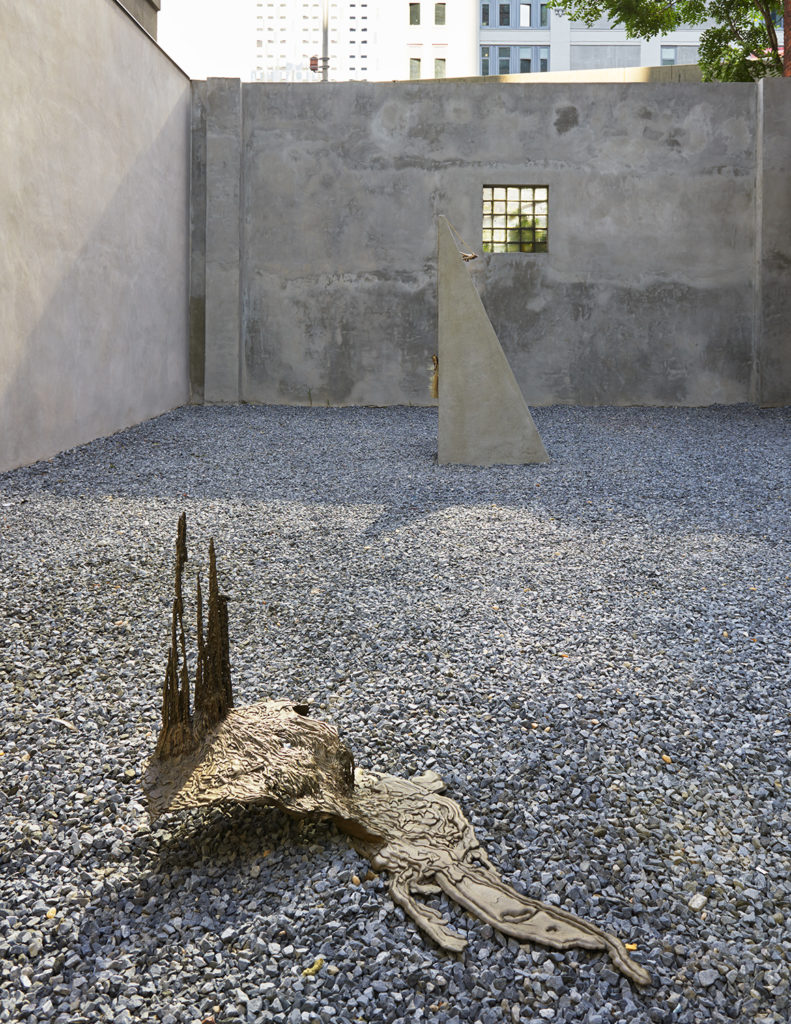
Long Exposure is Akashi’s first institutional solo show. It is abundant with blown glass, twisting candles, rope, copper, delicate tree branches, photograms, and cast hands, often installed atop (or penetrating) the smooth surface of cherry wood. Elsewhere they sit or hang, clustered or alone, in nooks and ledges throughout SculptureCenter’s windowless subterraneous spaces. A 16mm projection is also introduced, throwing flames onto a perforated copper screen. A level above this, outside in the courtyard, Akashi’s bronze hand is bound with rope, held by its own weight against a wedge of concrete. Glass buildings fill the view of this sky. The rope ends tangle in the wind like long hair.
If the extent of Akashi’s hand becomes difficult to detect in the work, the unclear edges of the exhibition itself are also made important. “Instead of creating work that responds to a space with strong character,” Akashi explains, she considers what it may “lend to the history and biography of the work.” Upon the opening of Long Exposure, I had the pleasure of visiting the artist’s studio, seeing other parts to this geology. Lined with materials and tools, as well as various spots for sitting, in the middle of this workspace sits a large, low table covered in many more colorful glass volumes. This isn’t the only space for Akashi’s working, though. Taking a walk, writing, hearing music, or working elsewhere — changing tempo — are also necessary.
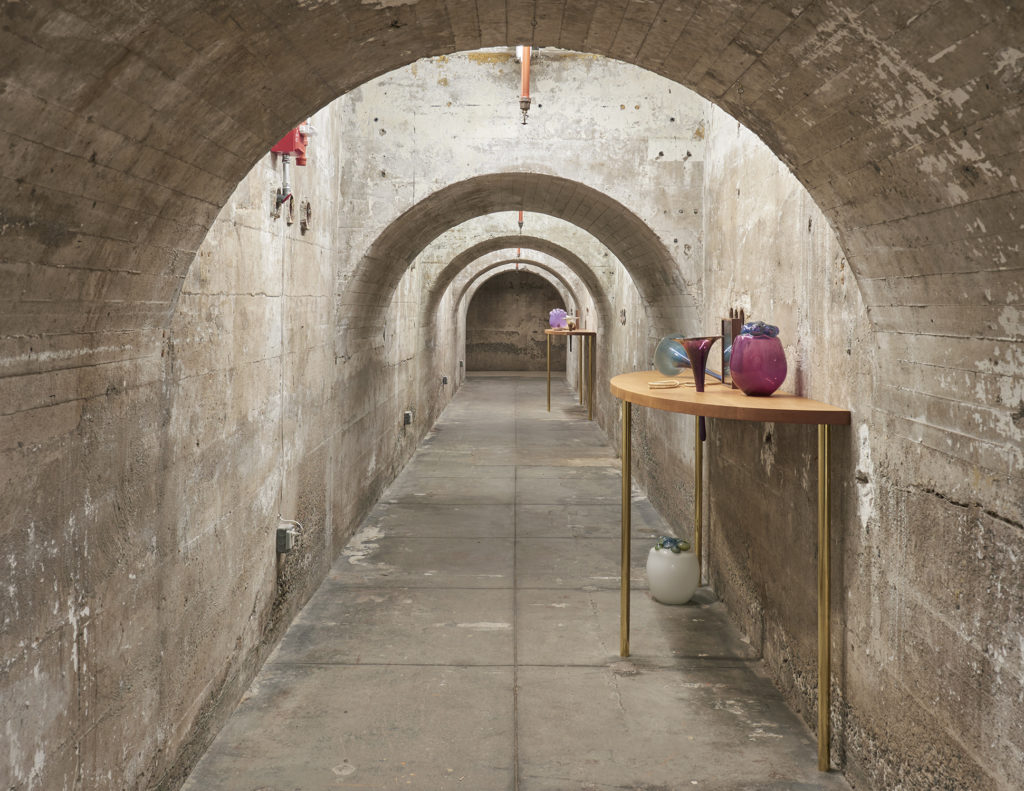
**Let’s begin with your show in SculptureCenter’s porous basement. How did you think through furnishing this space?
KA: In SculptureCenter’s basement, I was drawn to the most geological and impacted parts of the space: the patina of the concrete walls, the jagged broken concrete nooks, the arched cutouts carved into several dividing walls. I wanted to embrace these characteristics and allow them to become a framework, to have a conversation, not an interdependency, with my objects and images. The lack of natural light seemed especially useful for projections and allowed me the opportunity to produce a film work that operated as a lighting device for a screen (‘Shadow Film’). I then used the only window, a stairwell skylight, to create a contrasting work that accumulated sunlight through solar panels, which periodically illuminated a glass object that hung below.
The moveables, or structures that utilize the language of domestic furniture such as shelves and tables, specifically build off of the versions from my last exhibition, Being as a Thing. There, the moveables developed with a vocabulary that I borrowed from bed frame, table, shelving, screen, and sandplay design. For Long Exposure, I wanted them to further blur the boundary between object and display mechanism, and allow the arrangements to be examined without privileging any one perspective. This is what lead to the rounded and curved cherry wood planes — each one builds off of an interaction with a circle, whether elongated or divided or perforated.
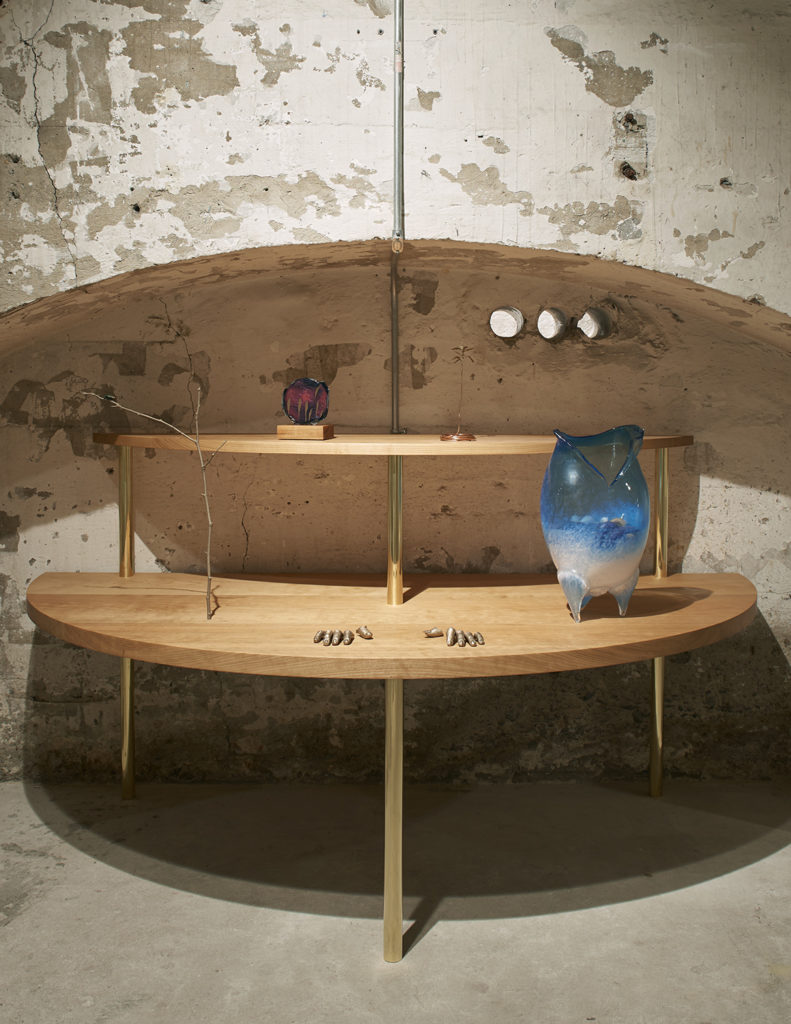
**With the moveables, this sense of accumulation and adaptation lies in the forms you take up. Could you speak about the cast bronze hands, what they hold, where they might lead?
KA: The introduction of casts of my own hands in the work became necessary as I began to identify the importance of my hands and fingernails as primary tools. At the time I was invested in my first series of bronze casts: a sequence of lost-wax cast bronze objects that substituted melted candles for foundry wax. I used my knowledge of wax, which came from watching candles burn very slowly in layers, and applied it to the casting process of my own hand. This process lent a geological quality to the wax cast of the hand, which is found in the wrist where many accumulated poured wax layers are evident through the drippings. Originally I wanted this geological sensibility to parallel itself with the cast fingernails, which are each a different length as some have broken off from work or other contact. After the first cast (‘Figure 31,’ made in 2015), I recognized how a life cast acts in a similar way to a photo document and thus expanded my sensibility of geology to embrace the slow changing human body.
A larger body of work has developed from this singular life-casting experiment. I now think of the casts operating in two ways: to slow down or ‘fix’ a physically rendered moment in time, and to provide a framework for the other object(s) on display. This framework can be a nod towards tactility, or a way to ascribe a sensibility and embed it in the object(s), for example with my works that share the title ‘Be Me.’
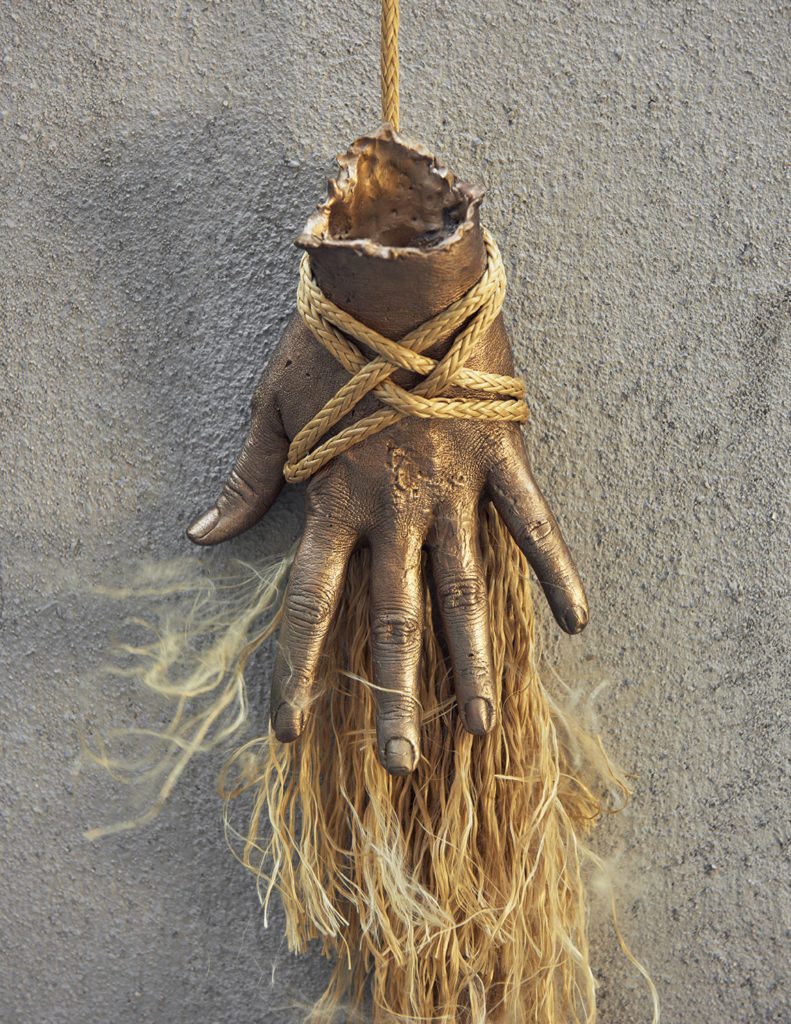
**Sometimes these hands are hanging, pointing, pressing, or grasping. Gravity is strong, as both sensation and element.
KA: I sometimes think that I create the objects I do because I want to see them in relation to the natural world. This is why I look to nature — to weeds and branches, combustion and light, the accumulation of wax drippings and other fluid to static states — for research and inspiration. I am thrilled when the boundaries between the natural world and the artwork are difficult to detect. I am able to bring in natural order by utilizing gravity in many of my works. Sometimes it is to show tension, to ‘float’ at a certain height, to compress, accumulate, or absorb.
‘Double Penetration’ and ‘Shadow Film’ are great works to bring up in relation to this, but I find a work as simple as ‘Be Me (Californian — Japanese Citrus)’ just as relevant. I placed it very high so that one would be eye-level with the bottom of the object, where the wax had dripped out of the mold and created small stalactites at the base of the citrus. It asks one to start from nature and then enter and examine the object, which is a cast of cultivated nature. And since I primarily use rather fluid, impressionable materials, I am most satisfied when it is difficult to discern where exactly my hand comes into play.
**I recall our conversation in your studio about the branch hanging from the ceiling and how it linked with the need for a break, entering a different timezone by taking a walk to find it. How do these varying tempos function into your working, which come to show in your materials?

KA: The varying tempos come from a sensitivity to where my attention is focused when making work. When I am making art under a sensibility of designated ‘work-time’ I feel it results in work that emits at a certain frequency, one I would describe as being rather uptight or detached from the ‘world at large.’ This mode is useful sometimes, but I am not personally drawn to other artists who work this way exclusively and I definitely do not want all the works I make to communicate through this kind of self-absorbed tunnel. And I suppose another big concern here is that when one gets into that level of minute attention to detail and to a level of ‘finishing,’ presentation, or ‘done-ness,’ intentionality can get lost if it is applied en masse or utilized exclusively… it can register as default or, worse, as standard.
So at some point I began to build different kinds of ‘work-time’ into my practice. There are multiple reasons why this is necessary. I am able to be deliberate with where I place my attention in my work, and how the value of attention to different objects is identified in my larger practice. I am also able to create work that does not take away, nor differentiate itself from my life, work that integrates itself within my daily life.
I experience a special kind of joy when I am able to identify something in my life, which was not intended as art, to be linked to sensibilities in my studio practice. As you saw when you came to visit, my studio is right next to my home kitchen, and I see the door that lies between as this portal where things can pass back and forth, from studio to kitchen, to be transformed. I am able to consistently learn and surprise myself through these varying modes of working.
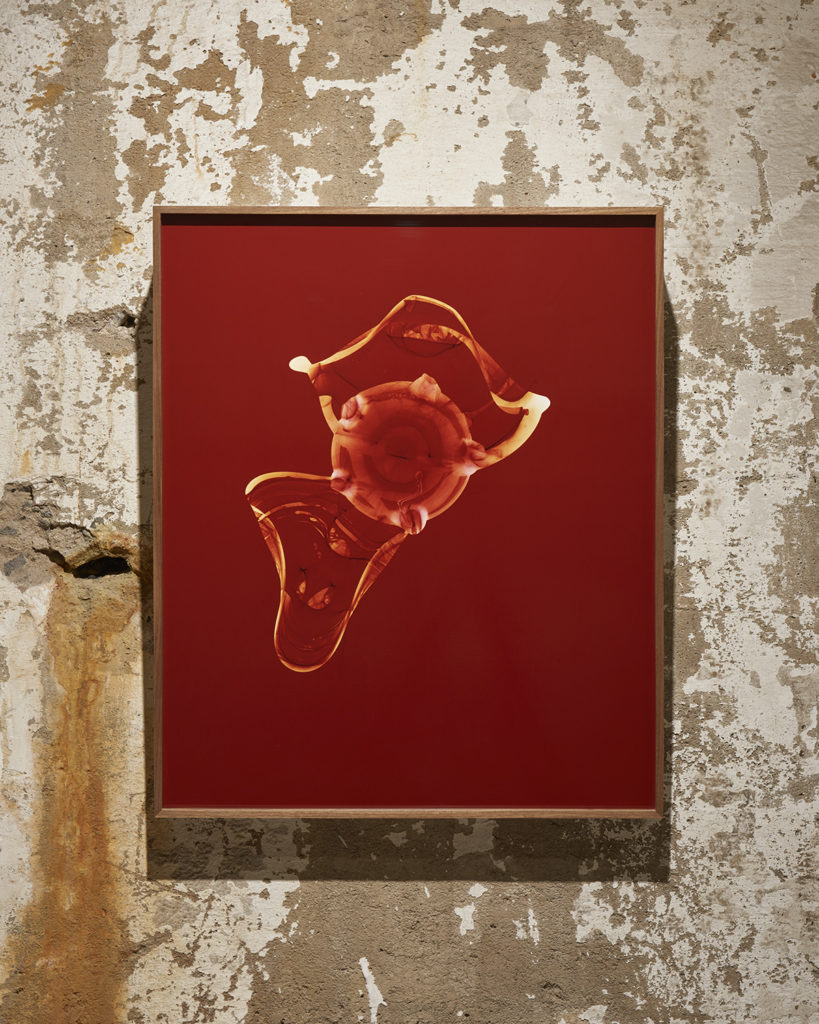
**In an interview a couple years ago with Sarah Lehrer-Graiwer you talked about why you don’t or can’t listen to music while you work, is this still the case?
KA: It is true that I still do not listen to music while I work, but since that interview I discovered that I love listening to music when I write. I choose music that has a rhythm or flow that I want to integrate into the text I am working on, and it feels somewhat natural to me to repeat the same album, or musician, for hours in order to embody their skillfully composed vibrations and utilize them in my own words and for my own meaning.
This relates to glassblowing, as well. There, I am listening for the sounds of the glass, especially as it cries out in stress. To not hear it is to not be paying attention. The wax too, when it is fully heated, will make this strange bubbling sound as the top plate of hardened wax dislodges from the pot and flatly sinks downward. These are all moments worthy of my attention, so I’d rather not muffle it.**













